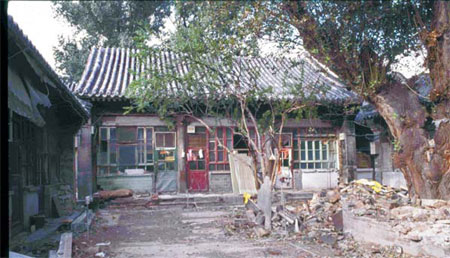Recycling glory
Updated: 2012-09-17 14:40
By Sun Ye (China Daily)
|
|||||||||||
 |
 |
|
Renovation can work wonders - pictured above and top are the past and present of Gongjian Sixiang in the Xicheng district. Photos Provided to China Daily |
From 'fit for kings' to 'unfit for living' to 'heritage showcase', Beijing's courtyard homes are spinning a new loop on the roller coaster of history. Sun Ye looks at the ups and downs.
Looking at the rotten columns and the fragile, weather-beaten walls, the appraiser's evaluation of a 100-year-old courtyard house or siheyuan in Xinjiekou was "unfit for living", even though the occupants had already removed much of the illegal and hazardous extensions so common to such properties.
About 95 percent of Beijing courtyard homes are in similar condition - crammed and cracked from decades of crowding and lack of funds to maintain and renovate.
Complicated psychographics and demographics are made worse by a situation where individuals are interested only in protecting their own interests and limited resources.
But there is no rush to mourn the demise of Beijing's most characteristic, common-man architecture.
It is enjoying a renaissance, and this time, it is not with government subsidy or help, it is market forces at work.
It is demand from investors with deep pockets, and a heartfelt interest in protecting their cultural heritage.
It has to be a specific group with a philanthropic bent because you need to invest the right attitude and time, as well as lots of silver and gold.
The courtyard homes in designated culturally protected areas cannot be demolished, neither can the land they stand upon be developed for other uses.
These properties are the most valuable.
They have to be restored according to guidelines culled from ancient regulations that dictate which rooms must face which direction, are built to what height and in what order.
It is these time-honored proportions that make the siheyuan architecture unique.
Although there are no official government requirements to enforce such details, every plan to renovate and restore these historic buildings must gain planning approval in a process that may take up to three or four years.
Related Stories
'Save our cultural code' 2012-09-17 09:02
Today's Top News
Rescuers race against time for quake victims
Telecom workers restore links
Coal mine blast kills 18 in Jilin
Intl scholarship puts China on the map
More bird flu patients discharged
Gold loses sheen, but still a safe bet
US 'turns blind eye to human rights'
Telecom workers restore links
Hot Topics
Lunar probe , China growth forecasts, Emission rules get tougher, China seen through 'colored lens', International board,
Editor's Picks

|

|

|

|

|

|






